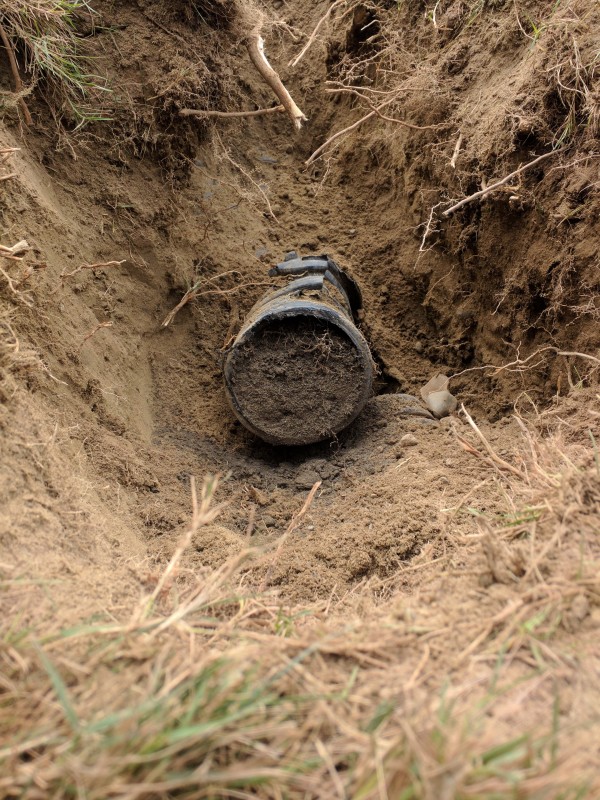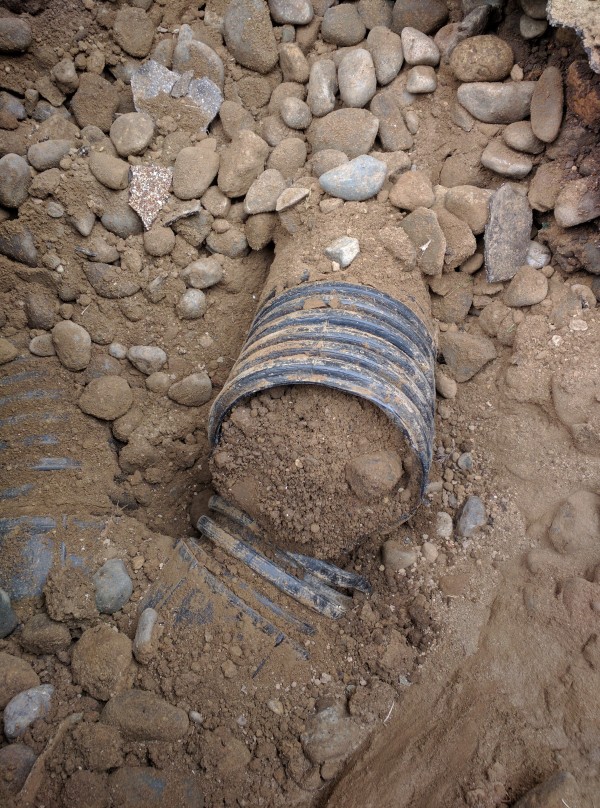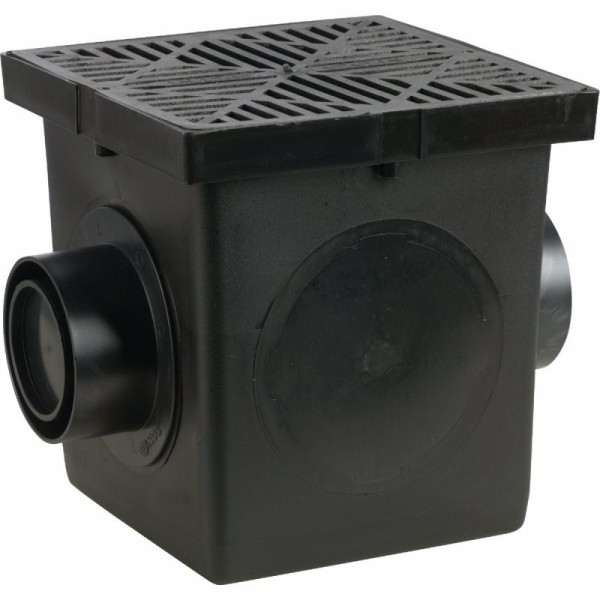SEATTLE DRAIN SERVICE
Cell 206-395-6350 call or text
Or email click here Bryce@SeattleDrainService.Com
Click here to text us!Drywells
French Drains and trench drains are pretty simple, a pipe with holes or slits is placed in a trench and surrounded with rock. The concept is the rock will give a quicker flow or easy path to some extra water we want to remove and it will go into the holes or slits into the pipe and be carried away somewhere else! Now people will argue about the rock size, if using rock is better than using cement sand, using filter fabric or not. But the main thing is not the collection of the water But where you take it!. And first lets say not to take it directly to the neighbors yard this can lead to bad relations or worse to a court date over a law suit. And there is no right answer as every yard or city rules are different. Most landscapers or house remodelers or flipper contractors like to dig a hole somewhere and fill it with pea gravel and run the french drain pipe to this location then cover it over. If you ask them why they will say "It will just dissipate into the earth" Well that may happen there are many flaws to that plan, 1. The earth will absorb as much water has it can but that amount will change over the coarse of the rainy months and when it can take no more it will begin backing up in the pipe going backwards toward where we collected it in the first place and making the area wet! Super Fail! Worse the dirt will flow back with it and clog the pipe making it not work in the beginning months of the rains and will need hydro-jetting to fix or complete replacement. I do not like to use drywells (RIP PiTs) but some times you have no choice because you are lower than everything else or cost to install and maintain a electric pump system is too much. But then we need to improve upon the above system, instead of small gravel or stones one should use 1.25" clean river rock (drain rock) the bigger the rock the larger the space between the rocks is and the longer the drywell will last before the small fines of sand and silt that are carried with our french drain system clog up our nice drywell system. I consider drywells as disposable and the rocks must be dug up to be replaced or cleaned eventually but by the same token If the hole is large enough (sized to the water job being asked of it) and large rock used and not be in clay soil to begin with they can last 5-15 years before needing work. I work hard to find the best long term solution to take the water to avoid using a drywell but sometimes you have no choice and should build it as best as can be done.
Into The Sewer System
Into The sewer system is only allowed if that is where the original downspouts or footing drains or driveway drains went to. Usually this is considered grandfathered in and is a repair or restore. It is not even just a city thing as only some parts of Seattle is it allowed and other cities it is not allowed at all! If it is allowed the drains usually need to be P-trapped to stop sewer gas from reaching our human nose. Do not do this until you have checked to see if it meets local code. I love doing this if it is possible for a few reasons 1: The old toilets where hi flush units and todays toilets are low flush and older sewer sytems really need a little boost of extra water to keep things flowing. Some people get talked into rain barrels and then start having sewer problems. 2: The roof water leaves the property and does not become problem water flooding the basement.
Into The Storm Water System
Well this is where it is meant to go! Problem is in Seattle and surrounding areas sometimes there just plain is not a SS drain system to hook pipe into. Or the cost is to high to tie into it.
Use Gravity To Take It To A Lower Place In The Yard Or Near The Sidewalk!
If there is a lower place in the yard where the water can be taken that is an excellent place to try if it does not cause damage. A series of trenches can be used with perforated pipe to make a (kind of) french drain / drain field that lets the water out instead of taking it into the pipe. This spreads it over a large area. If there is a sidewalk in front of the home and there is 2-3 feet between it and the houses property line then that can be the destination as well. A lot of homes North of 85th might even have cement pipes near the property line (but no sidewalks yet) that allowed driveways to be built when the house was made and if cleaned out can be a great place for the water to go.
What Kind Of Pipe To Use?
New home builders and landscapers Love to use black corrugated (ribbed pipe) because it is cheap and can be bent to angles and then they do not have to use fittings or have any skill to create a system But smoothwall PVC is way better! 4" is the perfect size for a long term system. Because it is smooth silt sand and rocks move along with the flow to the destination. Just using the PVC adds a cost to the total job but will last many more years over the cheap plastic black pipe and it has strength so that it can be snaked or use hydro-jetting. Clean out ports are added where needed for future maintenance. Speaking of Fittings the less sharp the radius is the more chance of not clogging, inside a home 90 degree fittings can be used because it would not be the end of the world if some drywall had to be removed to correct some clog that could not be snaked clear but outside a pipe may be 2 to 8 feet deep and not as simple of a task as removing a little drywall so using 45 degree max fittings spaced at least 2 feet apart is a good plan.
 Surface Water (Ponding) And Catch Basins
Surface Water (Ponding) And Catch Basins
Surface Water that is ponding then remains after the rain has stopped is a problem lots of people in Seattle deal with. You usually place a plastic 8 or 12 inch catch basin in the worst spot where the water ponds, but sometimes you may need to move the soil around to create a valley and then place the catch basin there. An example may be because the ponding is near the homes foundation. (2-4 feet)

